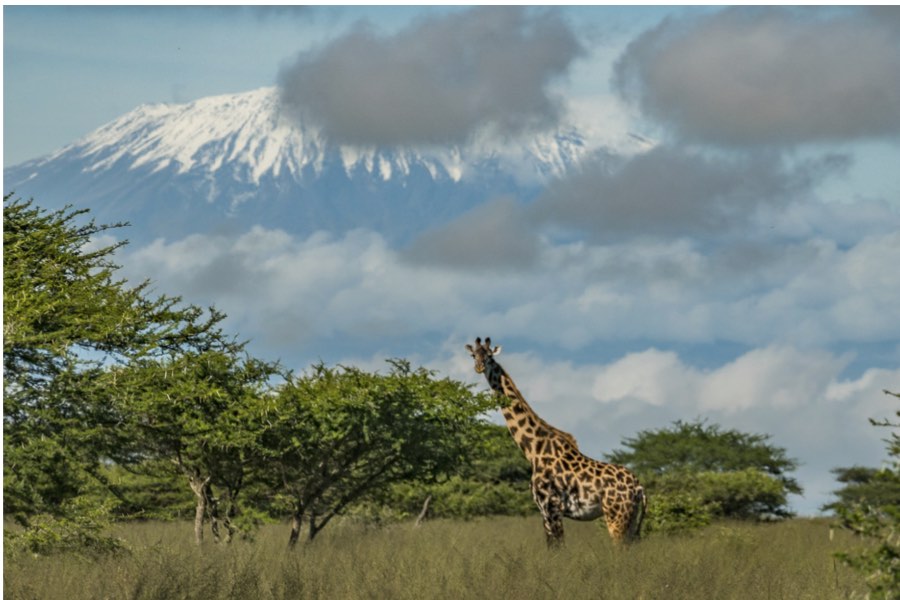
           Years ago I met Dr. Rhodes Moicombo in the little African country, Swaziland (now “Eswatiniâ€). When he learned about my interests, he told me how he had promoted family planning in Kenya.
           Right after medical school, Moicombo worked in a rural area of Kenya that had never had modern healthcare. He understood that he needed to win the respect of his future patients so came up with an idea. Knowing how much Kenyans prize children, he planned a demonstration of his medical skill using the kids. He set up shop under a large tree in the center of town and gave kids candy-flavored worm medicine. Parents were amazed and delighted the next day to find worms in their children’s poop!
           After Moicombo had established trust with his worm medicine, he started talking with the mothers about the advantages of family planning. I don’t know what methods were available to women then, but overall Kenya has been successful in lowering its fertility rate in the past half century.
           Back in the 1960s Kenya was one of the fastest growing countries in the world, with a Total Fertility Rate (the number of children that a woman bore) of about 8. Although much lower now, the TFR is still high at just over 3 children.
           Kenya had their census last year and we are just starting ours. A subscriber to Population Matters!, David Zarembka, has lived in Kenya for many years and his wife is Kenyan. Some of his recent blogs treat the results of the 2019 census.
           There are problems in getting accurate census data in any country, so it’s not surprising that the Kenyan 2009 census was marked by some “irregularitiesâ€. One of the purposes of a census is to allocate government funds. Knowing this, some enumerators (census workers) in the 2009 Kenyan census “padded†the numbers, so their region would get more money. There may have been a million “ghost†people who didn’t really exist! The Kenyan government made changes to prevent this sort of fraud in 2019. Enumerators came from outside the community, and a local “elder†accompanied each. The result of last year’s census was significantly lower than expected. There were 47.5 million Kenyans on the night of August 24, 2019.
           Zarembka is optimistic that Kenya’s growth rate is slowing. He writes: “As I look around Kenya… I notice that very few teenagers are now giving birth – one of the prerequisites for a fall in the birth rate.â€
          It will be interesting to see what the USA 2020 census will bring. We know that our country’s TFR is less than replacement, but our population will continue to grow due to population momentum and immigration. Even in the USA there are difficulties in getting an accurate count, since there are some groups who want to go under the radar—undocumented migrants are an example.
           Kenya is an example of what can be done to slow population growth. Moicombo was a pioneer in introducing family planning in one area, and recently I met another innovator. Dr. Charles Ochieng is a general physician in Nairobi whose passion is providing vasectomy care. He even offered to do his father’s vasectomy for free, but was turned down. His father already has 7 children with his new wife!
           Because I’m limiting my travel due to concern about climate change, I’ll probably never visit Kenya. However, I just watched a wonderful movie, The Hunter Legacy; perhaps some of you saw it at the Durango Independent Film Festival. In addition to world-class pictures of the beautiful people, scenery and wildlife, it tells important stories. Because of rapidly increasing population, especially in the past, humans have destroyed much of the wildlife. Hundreds of animals were killed in the past to make room for settlements. We have plowed much of the wildlife habitat into agricultural fields and ÂÂÂÂÂÂÂpoachers continue to the slaughter the animals.
           The Hunter Legacy demonstrates ways of protecting wildlife using armed guards, aerial surveillance and fences to keep animals away from settlements. It also stresses the importance of slowing population growth with family planning and education.
           The movie is about J.A. Hunter, a Scot who lived up to his name as a professional hunter, cleared the land of wildlife for human settlement. The film says this about Mr. Hunter: “J.A. Hunter lived for more than 50 years in East Africa. During that time, he shifted from a focus on hunting towards a belief in conservation as concerns about wildlife populations intensified.â€
           The film was made by Hunter Sykes, who lives in Durango. You can view the film at:  https://vimeo.com/ondemand/thehunterlegacy
© Richard Grossman MD, 2020
Â